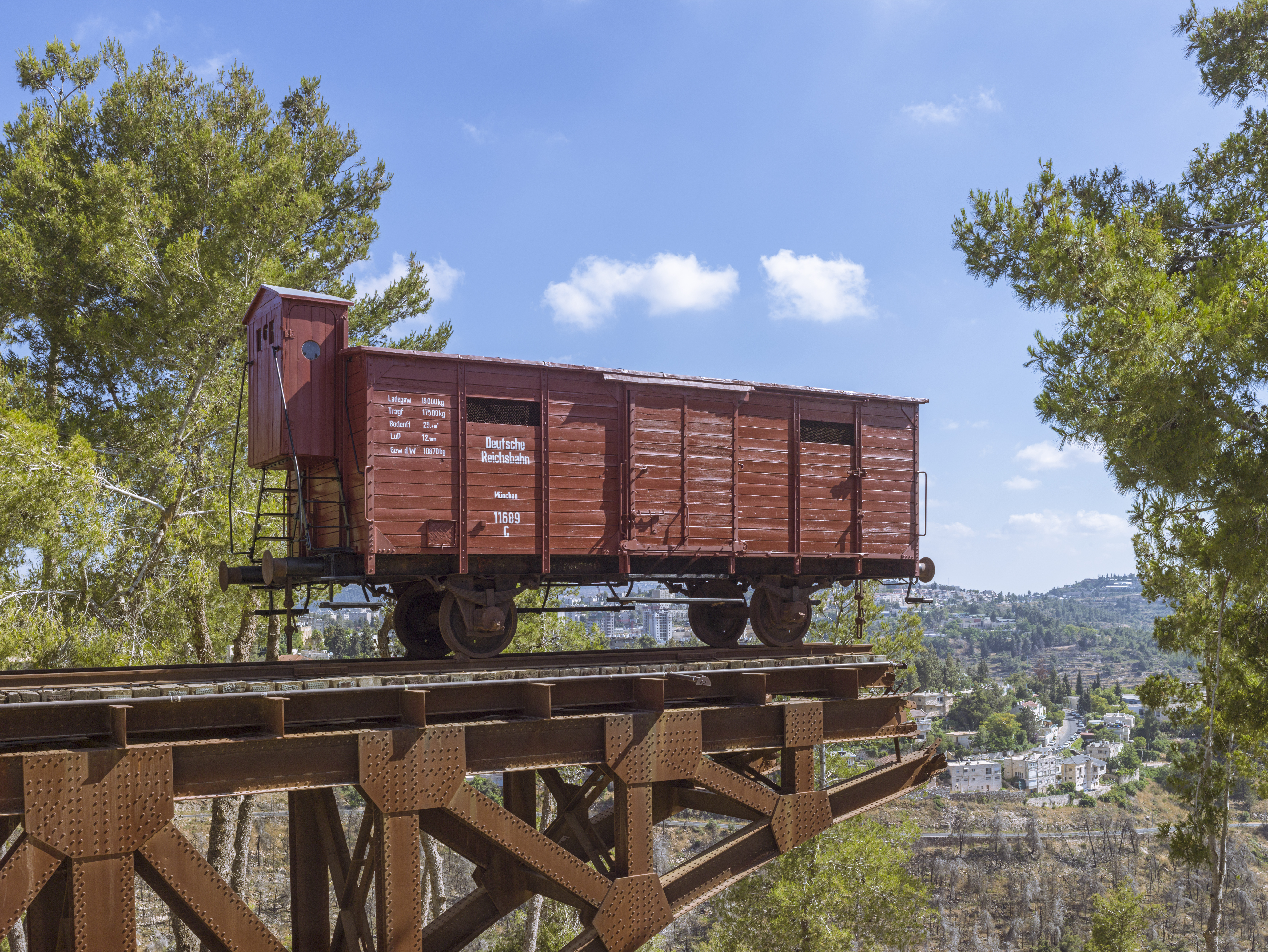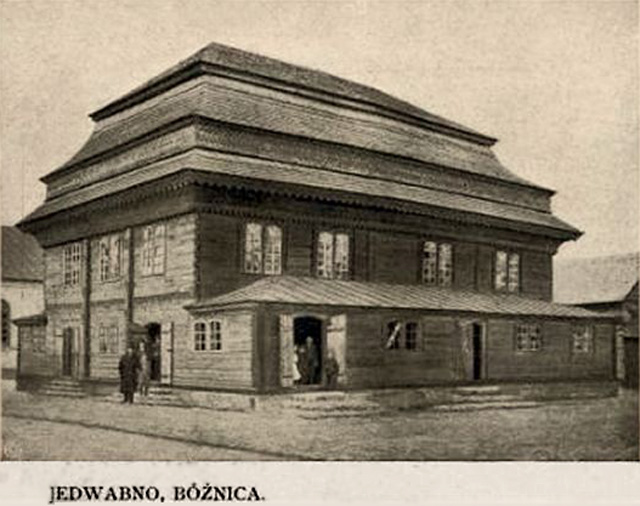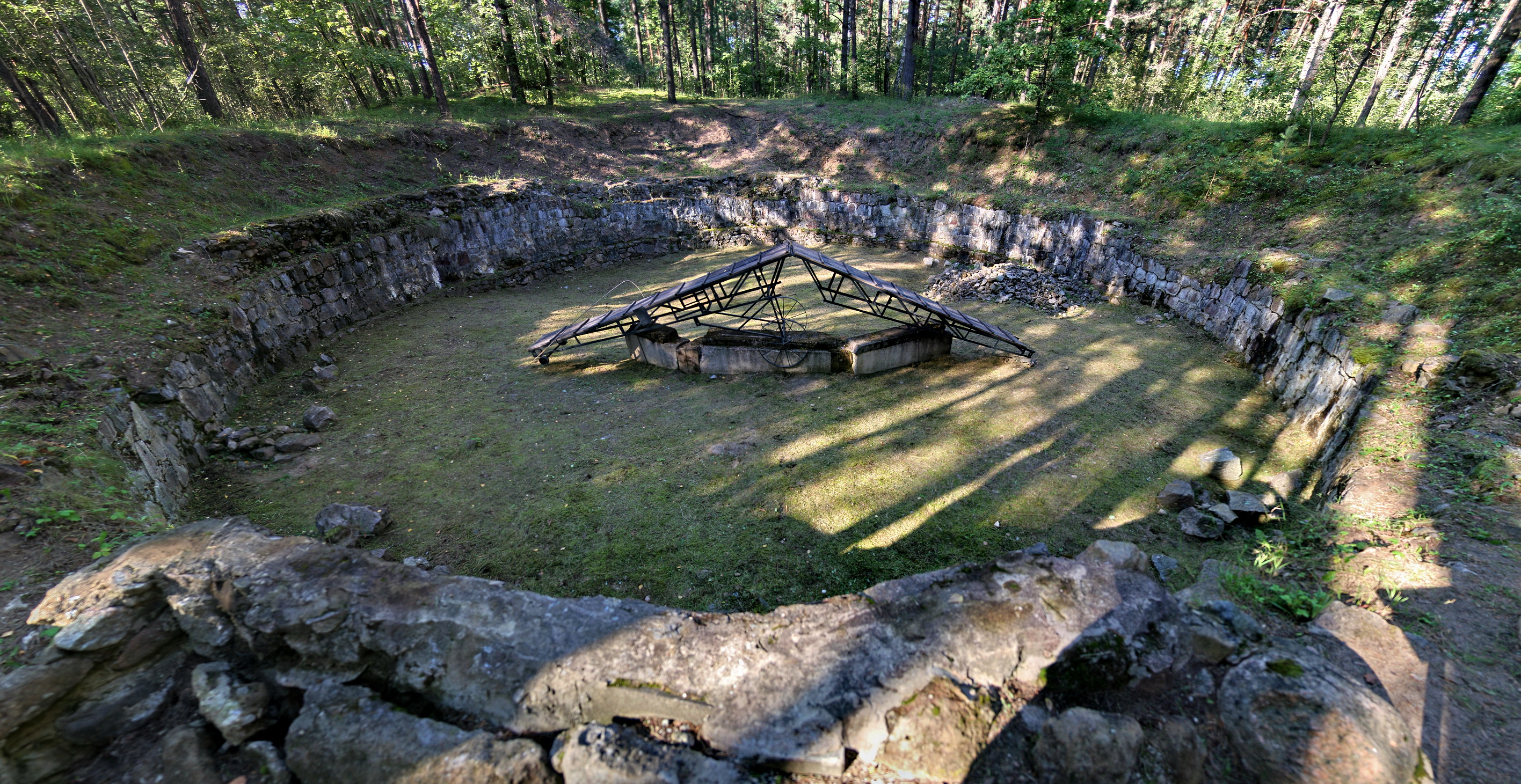|
ŇĀomŇľa Ghetto
The ŇĀomŇľa Ghetto was a Nazi ghetto created by on 12 August 1941 in ŇĀomŇľa, Poland; for the purpose of persecution of Polish Jews. Two months after Operation Barbarossa, the invasion of the Soviet Union, the Jews were ordered to move there in a single day, resulting in panic at the main entry on Senatorska Street adjacent to the Old Market (''Stary Rynek''). The number of Jewish men, women, and children forced into the ghetto ranged from 10,000 to 18,000. The survivors of anti-Jewish pogroms, murders, and expulsions in Jedwabne, Stawiski, Wizna, and Rutki-Kossaki, as well as refugees from other locales, were interned in the ghetto. Often, six families were housed there in a single room. The Ghetto was liquidated later on 1 November 1942, when all prisoners were transported aboard Holocaust trains to Auschwitz-Birkenau for extermination.Qiryat Tiv'on "ŇĀomŇľa from its beginnings," translated from Yiddish by Stan Goodman. Original published by Pinkas haKehilot branch of Ya ... [...More Info...] [...Related Items...] OR: [Wikipedia] [Google] [Baidu] |
The Holocaust In Poland
The Holocaust saw the ghettoization, robbery, deportation and mass murder of Jews, alongside other groups under Nazi racial theories, similar racial pretexts in Occupation of Poland (1939‚Äď1945), occupied Poland by the Nazi Germany. Over three million Polish Jews were murdered, primarily at the Chelmno, Belzec concentration camp, Belzec, Sobibor extermination camp, Sobibor, Treblinka concentration camp, Treblinka and Auschwitz concentration camp, Auschwitz extermination camps, who made up half of the Jewish Holocaust victims. During Nazi occupation, the country lost 20% of its population, or six million people, including three million Jews (90% of the country's Jewish population). The important Polish Jewish community pre-war was almost destroyed. All Poles, Christian or Jewish, were bound for total annihilation. In 1939, Nazi Germany invaded Poland while the Soviet Union Soviet invasion of Poland, invaded Poland from the east. In German-occupied Poland, Jews were killed ... [...More Info...] [...Related Items...] OR: [Wikipedia] [Google] [Baidu] |
Yad Vashem
Yad Vashem (; ) is Israel's official memorial institution to the victims of Holocaust, the Holocaust known in Hebrew language, Hebrew as the (). It is dedicated to preserving the memory of the Jews who were murdered; echoing the stories of the survivors; honoring Jews who fought against their Nazi oppressors and gentiles who selflessly aided Jews in need; and researching the phenomenon of the Holocaust in particular and genocide in general, with the aim of avoiding such events in the future. Yad Vashem's vision, as stated on its website, is: "To lead the documentation, research, education and commemoration of the Holocaust, and to convey the chronicles of this singular Jewish and human event to every person in Israel, to the Jewish people, and to every significant and relevant audience worldwide." Established in 1953, Yad Vashem is located on the Mount of Remembrance, on the western slope of Mount Herzl, a height in western Jerusalem, Above mean sea level, above sea level and ... [...More Info...] [...Related Items...] OR: [Wikipedia] [Google] [Baidu] |
Gestapo
The (, ), Syllabic abbreviation, abbreviated Gestapo (), was the official secret police of Nazi Germany and in German-occupied Europe. The force was created by Hermann Göring in 1933 by combining the various political police agencies of Free State of Prussia, Prussia into one organisation. On 20 April 1934, oversight of the Gestapo passed to the head of the ''Schutzstaffel'' (SS), Heinrich Himmler, who was also appointed Chief of German Police by Hitler in 1936. Instead of being exclusively a Prussian state agency, the Gestapo became a national one as a sub-office of the (SiPo; Security Police). From 27 September 1939, it was administered by the Reich Security Main Office (RSHA). It became known as (Dept) 4 of the RSHA and was considered a sister organisation to the (SD; Security Service). The Gestapo committed widespread atrocities during its existence. The power of the Gestapo was used to focus upon political opponents, ideological dissenters (clergy and religious org ... [...More Info...] [...Related Items...] OR: [Wikipedia] [Google] [Baidu] |
SŇāawiec
SŇāawiec is a village in the administrative district of Gmina Nowogr√≥d, within ŇĀomŇľa County, Podlaskie Voivodeship, in north-eastern Poland. It lies approximately south-east of Nowogr√≥d, west of ŇĀomŇľa, and west of the regional capital BiaŇāystok. After the joint German-Soviet invasion of Poland, which started World War II, the village was Occupation of Poland (1939‚Äď1945), occupied by the Soviet Union from 1939 to 1941, and then by Nazi Germany from 1941 to 1944. In 1943, the Germans massacred around 300 people in SŇāawiec, whom they previously imprisoned in nearby ŇĀomŇľa. Among the victims were inhabitants of the nearby towns of Zambr√≥w and Wysokie Mazowieckie. There is a memorial at the site. References Villages in ŇĀomŇľa County {{ŇĀomŇľa-geo-stub ... [...More Info...] [...Related Items...] OR: [Wikipedia] [Google] [Baidu] |
Jedwabne
Jedwabne (; , ''Yedvabna'') is a town in northeastern Poland, in ŇĀomŇľa County of Podlaskie Voivodeship, with 1,942 inhabitants (2002). History First mentioned in 1455 records, on 17 July 1736 Jedwabne received town rights from King Augustus III of Poland, including the privilege of holding weekly Sunday markets and five country fairs a year. A wooden Catholic church with two steeples was built in 1737‚Äď1738, and a synagogue around 1770. The Jedwabne synagogue was a fine example of the unique Polish Jewish architectural tradition of wooden synagogues. In the Third Partition of Poland in 1795, it was annexed by Kingdom of Prussia. In 1807, it was regained by Poles and included within the short-lived Duchy of Warsaw, and after the duchy's dissolution in 1815, it became part of Russian Partition, Russian-controlled Congress Poland. At the end of the 18th century, new textile factories opened. In 1851 there were as many as 17 weaving establishments employing 36 workers in the town. ... [...More Info...] [...Related Items...] OR: [Wikipedia] [Google] [Baidu] |
PińÖtnica
PińÖtnica Poduchowna (; until 1999 ''PińÖtnica Poduchowna'') is a village in ŇĀomŇľa County, Podlaskie Voivodeship, in north-eastern Poland. It is the seat of gmina (administrative district) called Gmina PińÖtnica. It lies approximately north of ŇĀomŇľa and west of the voivodeship capital BiaŇāystok. History PińÖtnica was founded by Janusz from Zaborowo who built the first church there (1407). The village has also a Neo-Gothic church (1931), which was destroyed during the Second World War and reconstructed after that. There are also Russian forts from the 19th century and from the First World War World War I or the First World War (28 July 1914 ‚Äď 11 November 1918), also known as the Great War, was a World war, global conflict between two coalitions: the Allies of World War I, Allies (or Entente) and the Central Powers. Fighting to ... in its vicinity. During World War II, the forts played a crucial role during the Battle of ŇĀomŇľa. Economy One of Poland's largest d ... [...More Info...] [...Related Items...] OR: [Wikipedia] [Google] [Baidu] |
Rzeczpospolita
() is a traditional Polish term for a political community founded for the common good. The noun "rzeczpospolita", meaning "public welfare, general good or advantage" "thing, matter" and "common" is analogous to the Latin ''rńďs pŇęblica'' ( "thing" + "public, common"), i.e. ''republic'', in English also rendered as '' commonwealth'' (historic) and ''republic'' (current). In modern Polish, the word is used exclusively in relation to the Republic of Poland, while any other republic is referred to in Polish as a (e.g. Italian Republic ‚Äď ). Origins The term has been used in Poland since the beginning of the 16th century. It was adapted for Poland, as it at that time had a unique republican system, similar to the former Roman . The famous quote by Jan Zamoyski, the Lord Chancellor of the Crown, on the importance of education is an example of its use: The meaning of is well described by the term '' commonwealth''. As a result, the literal meaning of is "Polish Com ... [...More Info...] [...Related Items...] OR: [Wikipedia] [Google] [Baidu] |
SS-Obersturmf√ľhrer Hermann Schaper
Hermann Schaper (August 1911 ‚Äď 2002), was a German SS functionary during the Nazi era. He was a Holocaust perpetrator responsible for atrocities committed by the ''Einsatzgruppen'' in German-occupied Poland and the Soviet Union and was convicted after the war of numerous war crimes. SS career Schaper joined the Schutzstaffel and was promoted to the rank of SS-''Untersturmf√ľhrer'' on 20 April 1935. He achieved the rank of SS-''Obersturmf√ľhrer'' on 20 April 1937. Before the 1939 invasion of Poland, Schaper worked at the SD principal offices of Nazi Germany. During the German occupation of Poland Schaper served as commander of ''Kommando SS Zichenau-Schr√∂ttersburg'' ‚Äď a Nazi ''Einsatzgruppe'', one of five such formations created in eastern Poland and composed of 500‚Äď1000 functionaries of the SS and Gestapo. Schaper operated in the PŇāock (renamed Schr√∂ttersburg) district administered by Count von der Groeben. His superior was SS-''Sturmbannf√ľhrer'' Hartmut Pulmer, a Gest ... [...More Info...] [...Related Items...] OR: [Wikipedia] [Google] [Baidu] |
Einsatzgruppe
(, ; also 'task forces') were (SS) paramilitary death squads of Nazi Germany that were responsible for mass murder, primarily by shooting, during World War II (1939‚Äď1945) in German-occupied Europe. The had an integral role in the implementation of the so-called "Final Solution to the Jewish question" () in territories conquered by Nazi Germany, and were involved in the murder of much of the intelligentsia and cultural elite of Poland, including members of the Catholic priesthood. Almost all of the people they murdered were civilians, beginning with the intelligentsia and swiftly progressing to Soviet political commissars, Jews, and Romani people, as well as actual or alleged partisans throughout Eastern Europe. Under the direction of Heinrich Himmler and the supervision of SS- Reinhard Heydrich, the operated in territories occupied by the ''Wehrmacht'' (German armed forces) following the invasion of Poland in September 1939 and the invasion of the Soviet Union i ... [...More Info...] [...Related Items...] OR: [Wikipedia] [Google] [Baidu] |
Nazi
Nazism (), formally named National Socialism (NS; , ), is the far-right politics, far-right Totalitarianism, totalitarian socio-political ideology and practices associated with Adolf Hitler and the Nazi Party (NSDAP) in Germany. During Hitler's rise to power, it was frequently referred to as Hitler Fascism () and Hitlerism (). The term "neo-Nazism" is applied to other far-right groups with similar ideology, which formed after World War II, and after Nazi Germany collapsed. Nazism is a form of fascism, with disdain for liberal democracy and the parliamentary system. Its beliefs include support for dictatorship, fervent antisemitism, anti-communism, anti-Slavism, anti-Romani sentiment, scientific racism, white supremacy, Nordicism, social Darwinism, homophobia, ableism, and the use of eugenics. The ultranationalism of the Nazis originated in pan-Germanism and the ethno-nationalist ''Völkisch movement, Völkisch'' movement which had been a prominent aspect of German nationa ... [...More Info...] [...Related Items...] OR: [Wikipedia] [Google] [Baidu] |
GieŇāczyn, ŇĀomŇľa County
GieŇāczyn is a village in the administrative district of Gmina ŇĀomŇľa, within ŇĀomŇľa County, Podlaskie Voivodeship, in north-eastern Poland. It lies approximately south of ŇĀomŇľa and west of the regional capital BiaŇāystok. The village is located at the north-eastern edge of a large forest complex known as the Red Wood (Czerwony B√≥r), a place of Polish and Jewish martyrology during World War II. Modern history Between 1941 and 1944, during Nazi German occupation of Poland, German commandos carried out mass killings of Poles and the Polish Jews The history of the Jews in Poland dates back at least 1,000 years. For centuries, Poland was home to the largest and most significant Jews, Jewish community in the world. Poland was a principal center of Jewish culture, because of the long pe ... trucked in from the ŇĀomŇľa Ghetto among other places, executed into pits on the outskirts of the GieŇāczyn forest.Marta Kurkowska - Budzan"The Second World War In Past And Present P ... [...More Info...] [...Related Items...] OR: [Wikipedia] [Google] [Baidu] |
Soviets
The Soviet people () were the citizens and nationals of the Soviet Union. This demonym was presented in the ideology of the country as the "new historical unity of peoples of different nationalities" (). Nationality policy in the Soviet Union During the history of the Soviet Union, different doctrines and practices on ethnic distinctions within the Soviet population were applied at different times. Minority national cultures were never completely abolished. Instead the Soviet definition of national cultures required them to be "socialist by content and national by form", an approach that was used to promote the official aims and values of the state. The goal was always to cement the nationalities together in a common state structure. In the 1920s and the early 1930s, the policy of national delimitation was used to demarcate separate areas of national culture into territorial-administrative units, and the policy of korenizatsiya (indigenisation) was used to promote involvement ... [...More Info...] [...Related Items...] OR: [Wikipedia] [Google] [Baidu] |





